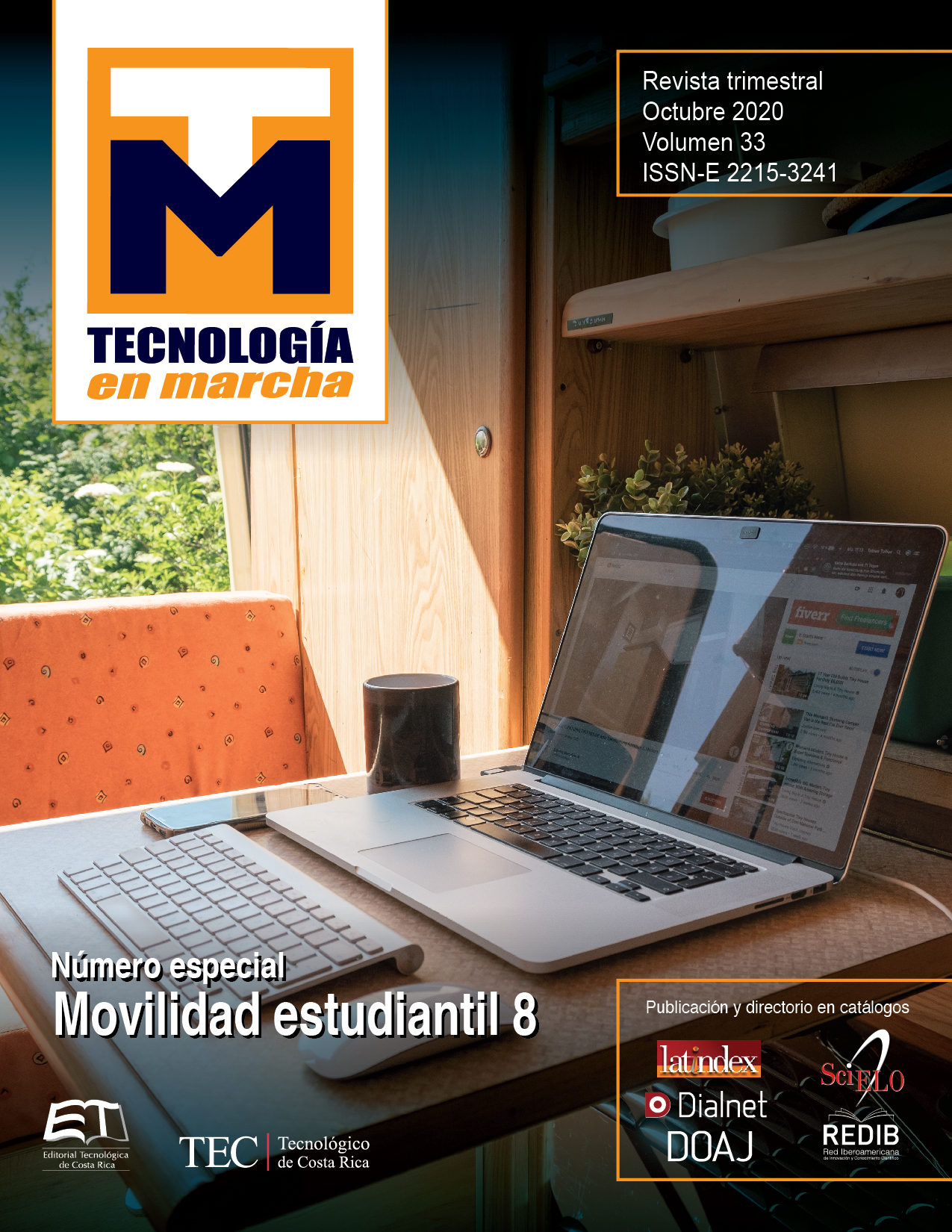Modificación de librería de control para mejorar interacción de robot con el entorno
Main Article Content
Abstract
One of the objectives of the Poppy Project is to offer a platform accessible to beginners and
experts, allowing robots to be used in multiple fields, including research and teaching.
During the work with Pypot, the control library in charge of controlling the Poppy robots, several
limitations have been detected that are needed to be fixed. One of the most important problem
related to the research work that is going to be done, is the small number of sensors that it can
access.
Thanks to the fact that both software and hardware are open source and the users can adjust
them to their needs, a series of modifications are intended to be done on the control library,
to use the humanoid robot Poppy in the research project. One of the main requirements is the
capacity to use via Pypot the new sensors and actuators added to the robot.
Finally, in a period of four months of work, the library got improvements in the image processing
module, communication with IMU and Arduino boards, implementation of facial recognition, use
of proximity sensors in simulation, use of custom motors in simulation, simultaneous execution
of instructions in multiple robots, display of animations through the LCD screen, and a behavior
controller that allows combining more than one functionality to create behaviors.
Article Details

This work is licensed under a Creative Commons Attribution-NonCommercial-NoDerivatives 4.0 International License.
Los autores conservan los derechos de autor y ceden a la revista el derecho de la primera publicación y pueda editarlo, reproducirlo, distribuirlo, exhibirlo y comunicarlo en el país y en el extranjero mediante medios impresos y electrónicos. Asimismo, asumen el compromiso sobre cualquier litigio o reclamación relacionada con derechos de propiedad intelectual, exonerando de responsabilidad a la Editorial Tecnológica de Costa Rica. Además, se establece que los autores pueden realizar otros acuerdos contractuales independientes y adicionales para la distribución no exclusiva de la versión del artículo publicado en esta revista (p. ej., incluirlo en un repositorio institucional o publicarlo en un libro) siempre que indiquen claramente que el trabajo se publicó por primera vez en esta revista.
References
Atkeson, C. G., Hale, J. G., Pollick, F. E., Riley, M., Kotosaka, S., Schaul, S., & Kawato, E. (2000). Using humanoid robots to study human behavior. IEEE Intelligent Systems and their applications, 15(4), 46-56.
Kanehiro, F., Kaneko, K., Fujiwara, K., Harada, K., Kajita, S., Yokoi, K.,. & Isozumi, T. (2003, September). The
first humanoid robot that has the same size as a human and that can lie down and get up. In Robotics and
Automation, 2003. Proceedings. ICRA’03. IEEE International Conference on (Vol. 2, pp. 1633-1639). IEEE.
Diftler, M. A., Mehling, J. S., Abdallah, M. E., Radford, N. A., Bridgwater, L. B., Sanders, A. M., … & Hargrave,
B. K. (2011, May). Robonaut 2-the first humanoid robot in space. In Robotics and Automation (ICRA), 2011
IEEE International Conference on (pp. 2178-2183). IEEE
Lapeyre, M., Rouanet, P., & Oudeyer, P. Y. (2013, March). Poppy: A new bio-inspired humanoid robot platform
for biped locomotion and physical human-robot interaction. In Proceedings of the 6th International Symposium
on Adaptive Motion in Animals and Machines (AMAM).
poppy-project. (2017) Pypot: A Python lib for Dynamixel motors control. [En línea] Disponible en: https://github.
com/poppy-project/pypot
, M. F. (1999). Python: a programming language for software integration and development. J Mol Graph Model,
(1), 57-61.
Rohmer, E., Singh, S. P., & Freese, M. (2013, November). V-REP: A versatile and scalable robot simulation
framework. In Intelligent Robots and Systems (IROS), 2013 IEEE/RSJ International Conference on (pp. 1321-
. IEEE.
Coppelia Robotics. (s.f.) Vision sensors [En línea] Disponible en: http://www.coppeliarobotics.com/helpFiles/
en/visionSensors.htm
Coppelia Robotics. (s.f.) Proximity sensors [En línea] Disponible en: http://www.coppeliarobotics.com/helpFiles/en/proximitySensors.htm
NavEx (2016) What is an IMU? [En Linea] Disponible en: https://www.spartonnavex.com/imu/
Cadena Castro, L. M., & Heredia López, J. A. (2018). Sistema inteligente con visión artificial para el reconocimiento de piezas mecánicas en el Robot NAO.
Ageitgey. (2018). face_recognition. [en línea] Disponible en: https://github.com/ageitgey/face_recognition

